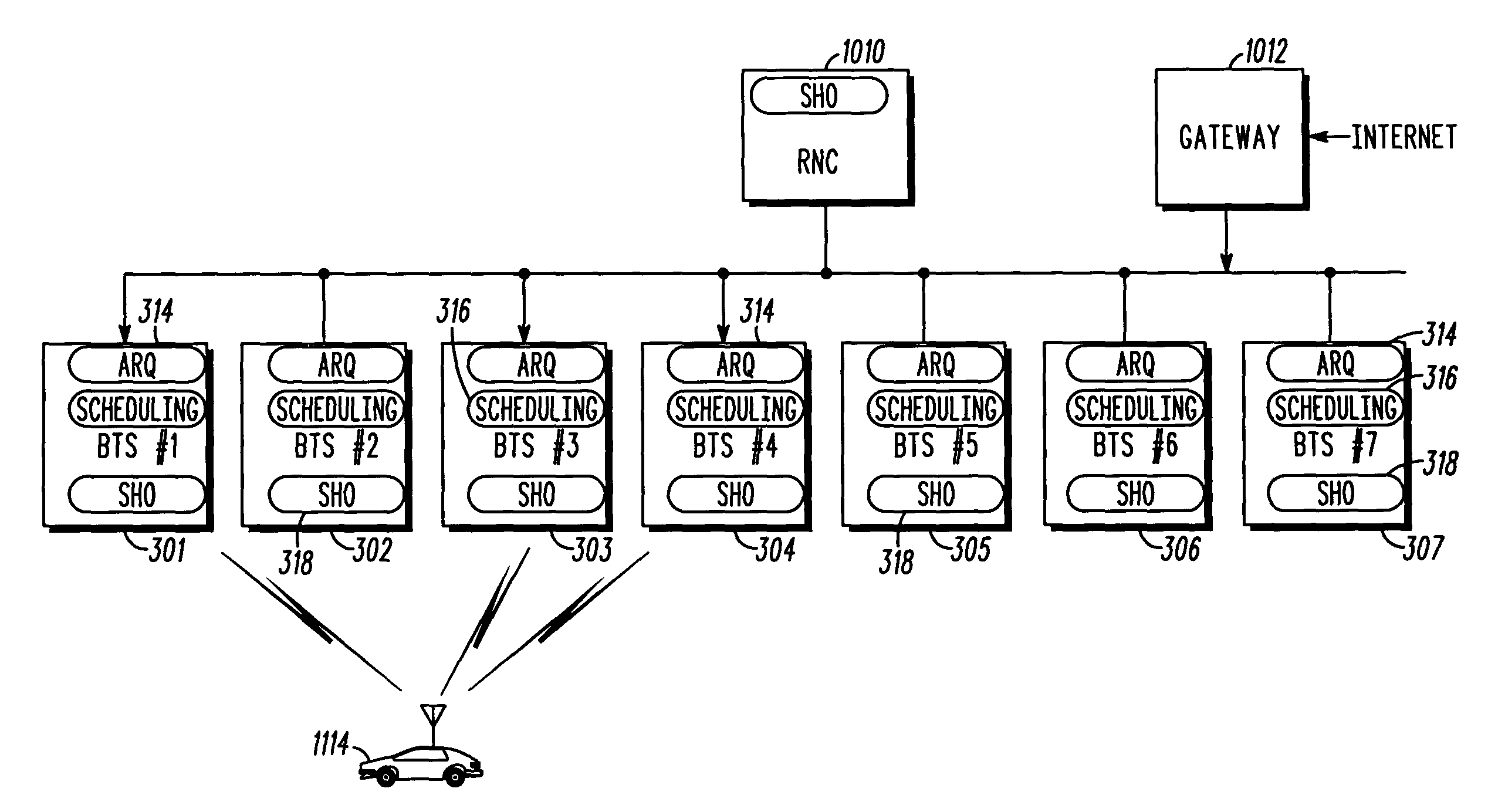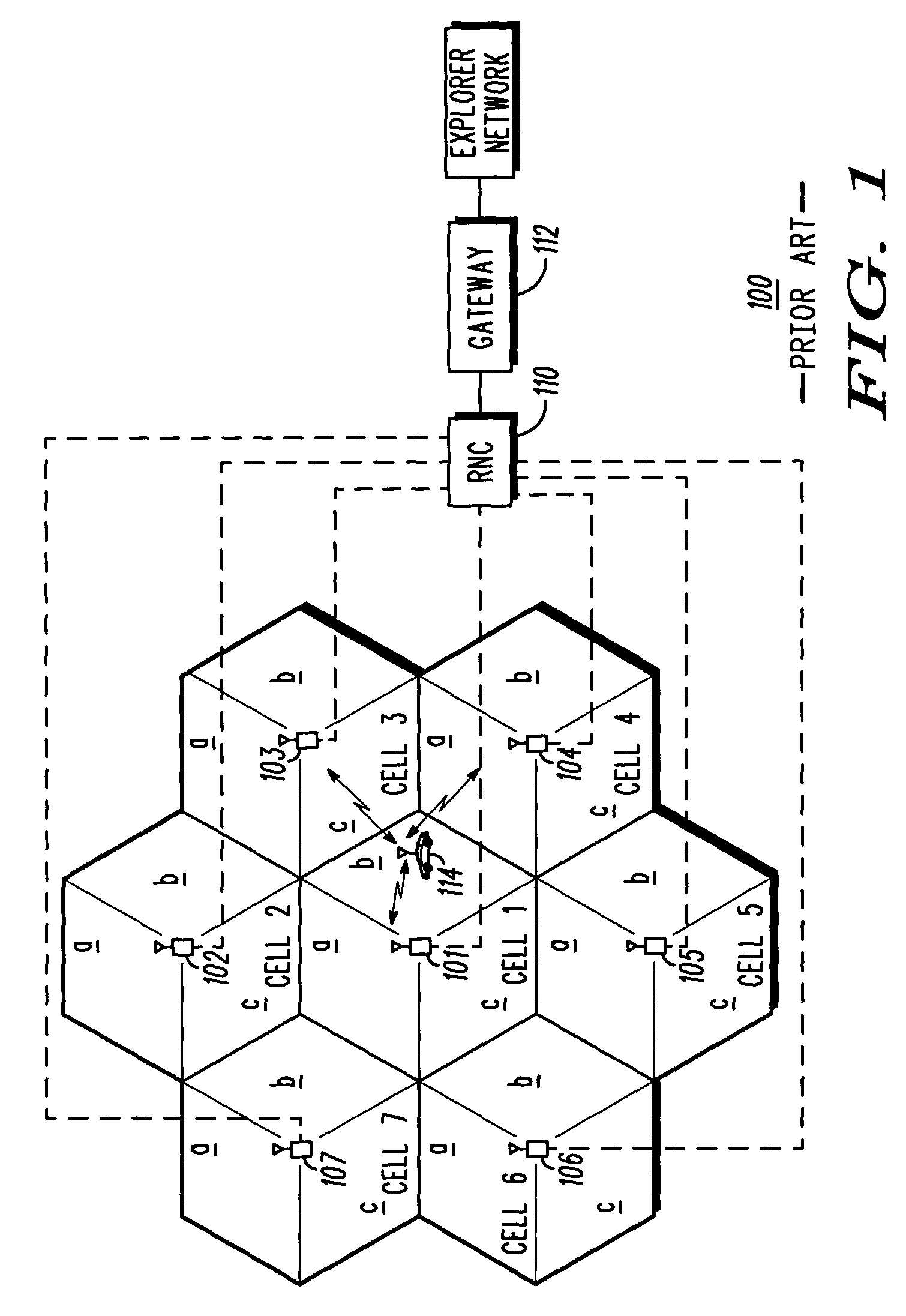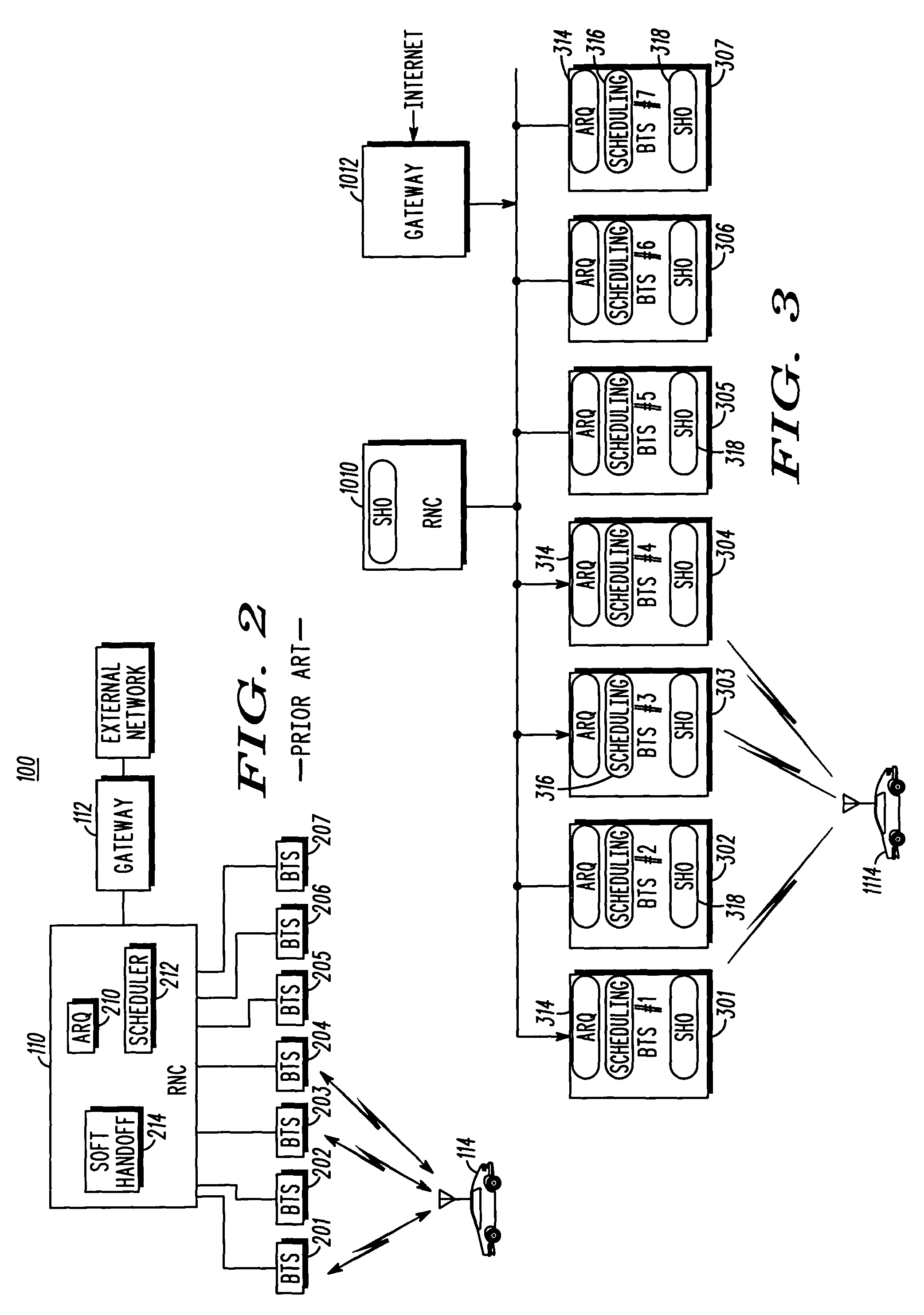Enhanced uplink rate selection by a communication device during soft handoff
a communication device and uplink rate technology, applied in multiplex communication, signalling characterisation, power management, etc., can solve the problems of time synchronization of the base station not always readily accommodated, asynchronous transmissions are not without their own set of concerns, and problems can aris
- Summary
- Abstract
- Description
- Claims
- Application Information
AI Technical Summary
Benefits of technology
Problems solved by technology
Method used
Image
Examples
Embodiment Construction
[0028]The present invention provides for a mobile station to determine a maximum transmission rate on an enhanced uplink channel while also considering the impact on all adjacent cells (typically cells in its active or neighbor set), and not just the best serving (target cell) or scheduling Active Set cell, such that uplink voice and other signaling coverage is not significantly impacted. The present invention also takes into account corrections due to power control commands from the BTS, not only from the scheduling cell but also the Active Set of cells. Further, the present invention takes advantage of imbalances between transmission gains between the MS and its scheduled or target cell and non-scheduled or non-target cells.
[0029]The present invention supports Active Set handoff and scheduling functions by allowing a mobile station (MS) to signal control information corresponding to an enhanced reverse link transmission to Active Set BTSs and a scheduler that performs control func...
PUM
 Login to View More
Login to View More Abstract
Description
Claims
Application Information
 Login to View More
Login to View More - R&D
- Intellectual Property
- Life Sciences
- Materials
- Tech Scout
- Unparalleled Data Quality
- Higher Quality Content
- 60% Fewer Hallucinations
Browse by: Latest US Patents, China's latest patents, Technical Efficacy Thesaurus, Application Domain, Technology Topic, Popular Technical Reports.
© 2025 PatSnap. All rights reserved.Legal|Privacy policy|Modern Slavery Act Transparency Statement|Sitemap|About US| Contact US: help@patsnap.com



